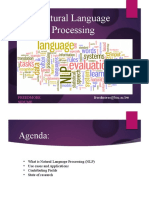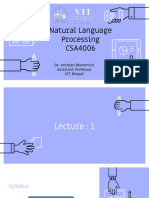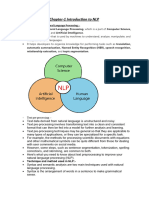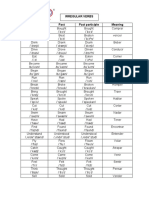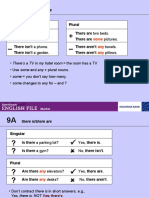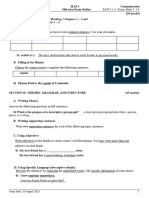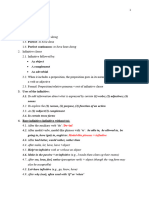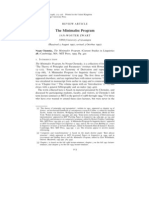0% found this document useful (0 votes)
7 views2 pagesNLP Introduction Notes Anna University
Natural Language Processing (NLP) is a branch of Artificial Intelligence focused on enabling machines to understand human languages, evolving from early machine translation to modern deep learning. Key challenges in NLP include ambiguity and multilingualism, while techniques such as language modeling, regular expressions, and tokenization play crucial roles in processing text. Additionally, methods like Minimum Edit Distance are used for tasks such as spell checking and plagiarism detection.
Uploaded by
keerthanaannadurai2001Copyright
© © All Rights Reserved
We take content rights seriously. If you suspect this is your content, claim it here.
Available Formats
Download as PDF, TXT or read online on Scribd
0% found this document useful (0 votes)
7 views2 pagesNLP Introduction Notes Anna University
Natural Language Processing (NLP) is a branch of Artificial Intelligence focused on enabling machines to understand human languages, evolving from early machine translation to modern deep learning. Key challenges in NLP include ambiguity and multilingualism, while techniques such as language modeling, regular expressions, and tokenization play crucial roles in processing text. Additionally, methods like Minimum Edit Distance are used for tasks such as spell checking and plagiarism detection.
Uploaded by
keerthanaannadurai2001Copyright
© © All Rights Reserved
We take content rights seriously. If you suspect this is your content, claim it here.
Available Formats
Download as PDF, TXT or read online on Scribd
/ 2


































